�
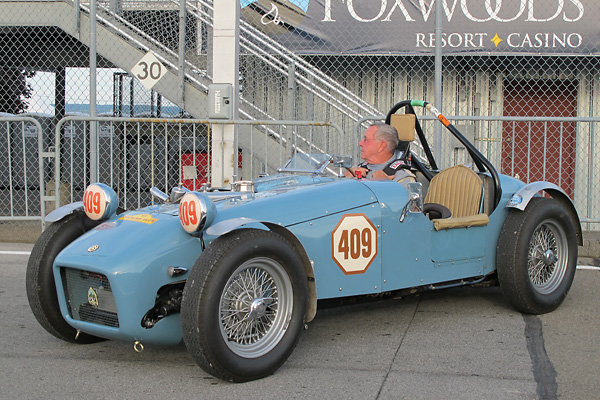
�
Dan Leonard's 1949 MG TC Special Race Car, Number 409
� Owner: Dan Leonard� � City: Parkton, MD
� Model: 1949 MG TC Special
� Engine: Morris/MG XPAG 4-cylinder (1250cc)
� Restoration and Race Prep by: Jack Merryman at Merryman Modifications �
�
Charles Bowen Built an MG TC Special
��
This MG TC based special was originally built and raced by a young Bell Helicopter �
engineer named Charles W. Bowen Jr. (Friends called him "C-Bone".) Bell's helicopter �
division relocated from upstate New York to Hurst Texas in 1951, and Charles Bowen�
built and raced this MG special while working there. �
�
Bowen had purchased the MG TC (number 7576) new in 1949. When he decided to build it �
into a racecar, he combined MG parts with surplus material purchased at Bell's scrap �
auctions. The car's aluminum seats are from Bell's iconic Model 47 helicopter. If you've �
seen "M*A*S*H", you know what a Model 47 looks like; think "fishbowl". They were used in �
the Korean war for transporting wounded soldiers.�
�
The Charles Bowen MG TC's most distinctive feature is its lightweight bodywork.�
Body panels, floorboards, and dashboard were all constructed of thin aluminum sheetmetal. �
Bowen constructed handsome nose and tail sections with fiberglass, and he mounted the �
body on a lightweight tubular steel framework. Although the body wasn't radically �
streamlined, its frontal area was significantly smaller than a standard MG TC - �
especially when originally raced (sans roll-hoop).�
�
�
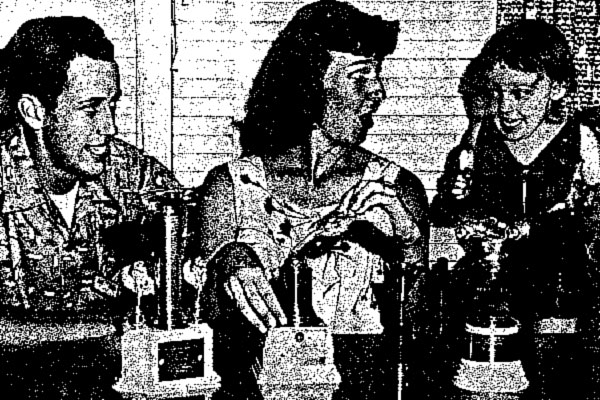
�
Bowen and his MG TC Special were featured in the August 10, 1956 edition of Bell Aircraft News.
�
This photo was captioned: "Aha. I did it," two-year-old Lisa Gay Bowen seems to say of the broken
�
racing trophy won by father Charles (left) and held by mother Betty Bowen. She did it, too.
�
�
Bowen's "very potent" MG TC Special was mentioned in a December 1954 Road & Track �
article. Regretably, the car's original racing logbook is missing. Bowen is known to have �
occasionally raced the car in Texas and in California. (Reader: if you have information about �
this car's early race history, we'd be very pleased to send it on to Dan Leonard.) Charles �
usually drove the MG TC himself, but his wife Betty is known to have driven it in at least �
one club race. Some race entry forms seem to show the car entered with two drivers' names: �
Bowen and also Mr. Robert W. Rodier. The MG TC was kept nominally street-legal; the Bowens �
reportedly enjoyed participation in occasional time-speed-distance rallies. �
�
Charles Bowen would ultimately establish himself as an expert in gear transmission and �
lubrication. While serving as President of Transmission Consultants Inc. of Arlington �
Texas, Bowen did pioneering work in early detection of gear failures by means of �
vibration signature monitoring. He died in a car accident, in about 1979. �
�
�
Enjoying this article? www.BritishRaceCar.com is partially funded through generous support from readers like you!
�
To contribute to our operating budget, please click here and follow the instructions.
�
(Suggested contribution is twenty bucks per year. Feel free to give more!)�
�
David Stern purchased the car from the Bowen family in 1984 and held onto it through 1989. �
At that time, the MG TC Special was purchased by Dave Raymond for his wife Joanne.�
Dave Raymond was proprietor of Abingdon Classics, and he was already an enthusiastic�
MG T-series racer - but the special was definitely Joanne's car. She raced it at Lime �
Rock on several occasions. The couple kept it street legal, and at one time took it with�
them to England for a "Circuit of Britian" tour.�
�
Dan Leonard purchased the MG TC Special from Joanne Raymond in 2008. As you'll see in �
the photos below, the car has subsequently undergone a comprehensive restoration by �
Jack Merryman of Merryman Modifications in Hanover Pennsylvania.�
�
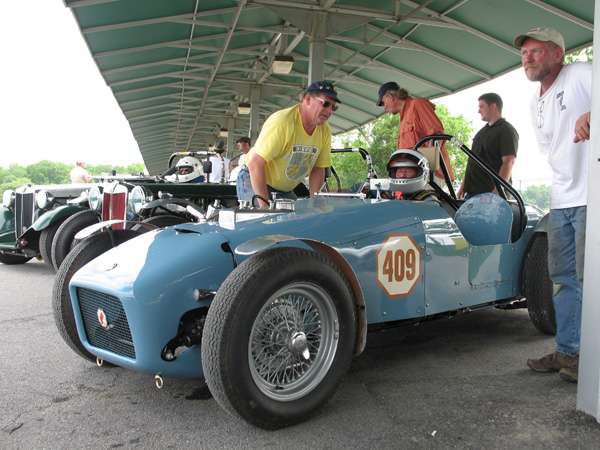
�
Dan Leonard on the pre-grid at Virginia International Raceway, assisted by accomplished
�
fellow racers Robban Andersson (yellow shirt) and Jay Sevier (white shirt).
�
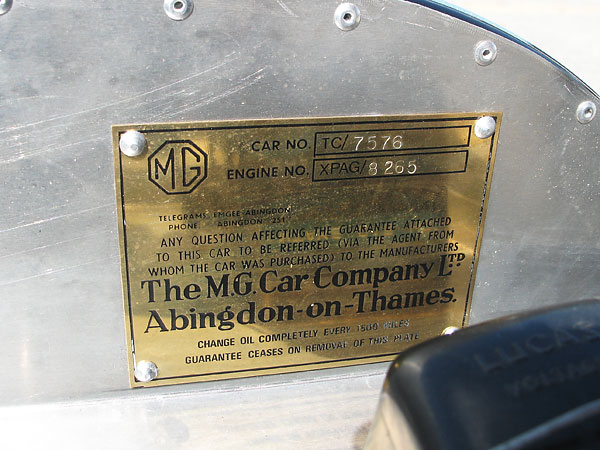
�
The M.G. Car Company Ltd., Abingdon-on-Thames
�
CAR NO. TC/7576 - ENGINE NO. XPAG/8265
�
Please support the sponsoring companies who make www.BritishRaceCar.com possible, including:
�
 �
�
Under the Skin
��
The MG TC Special came to Dan Leonard with Charles Bowen's original construction bucks, �
with replacement fiberglass parts still on them! The nose cone shown here is the same one �
that's been on the car since Bowen raced it, but the tail section shown below has been �
replaced with the spare part Charles Bowen layed-up way back when. One of Dave �
Raymond's modifications to the car had been installing a piano hinge on the tail section �
for easier access to the rear cargo area. That modification has now been reversed.�
�
A couple other modifications from the Dave and Joanne Raymond years have also been �
reversed. A relatively large Lotus Seven style windscreen has been discarded, as �
has a hefty muffler that had been installed on the righthand side of the body's exterior.�
Jack Merryman fabricated a new, stronger, and more elegant roll structure. He completely �
remounted the fuel cell and strengthened the frame. Etc. �
�
Dan Leonard raced the MG TC Special in 2009 with an essentially stock MG TC "XPAG" engine �
and transmission, but he warns that the car will be back with a much more highly tuned �
and powerful engine for 2010.�
Pre-Restoration Photos
��
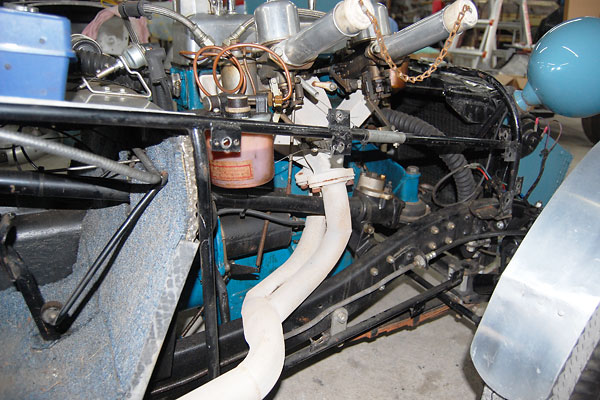
�
Helicopter tail section tubing was reportedly used for the framework of the car's custom body.
�
The tubing is believed to be chrome-moly steel. It's noticably harder than mild steel tubing.
�
No particular problems (e.g. broken welds) have been observed with this very lightweight frame.
�
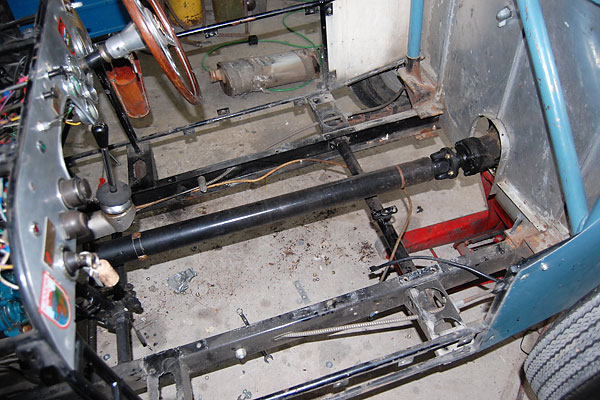
�
Dave Raymond made some interesting modifications before shipping the MG TC to England. He installed
�
a bellypan! The space between floorboards and bellypan was used for tool storage, with access through
�
trapdoors behind the seats. The bellypan was removed when the car was restored for vintage racing.
�
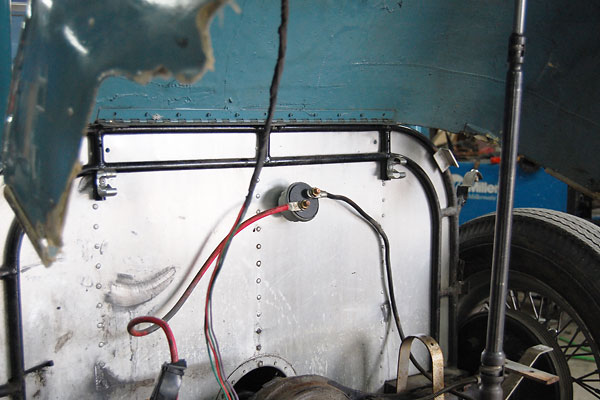
�
Dave Raymond added a piano hinge to the rear body section for convenient access to the cargo area.
�
He also moved the battery back, and mounted a racing fuel cell. Dan Leonard is more specifically
�
interested in racing, so Jack Merryman retrofitted a non-hinged cover that suits a much stronger
�
roll structure. The fuel cell was remounted lower and more securely. Bracing was added to the frame
�
at this time. The battery was moved forward to where it now resides, behind the passenger seat.
�
Features and Specifications
�| Engine: | �MG XPAG 4-cylinder (nominally 1250cc, and 66.5mm bore by 90mm stroke). �
Twin 1.5" S.U. carburetors with long velocity stacks. �
Vertex Magneto ignition. Fram spin-in oil filter. | �
| Cooling: | �modified (shortened) copper-and-brass MG radiator. Header tank on firewall. | �
| Exhaust: | �two-piece Solt iron exhaust manifolds flow into a fabricated (2-into-1) secondary collector. | �
| Transmission: | �MG TC 4-speed (unmodified). | �
| Rear Axle: | �MG TC rear axle, with 5.125:1 ratio and open differential. | �
| Front Susp.: | �leaf sprung solid axle, with MG TC style Girling lever shock absorbers.�
MG TC steering gear, upgraded with Tompkins kit (Moss Motors part# 260-118. �
The Tompkins kit was originally developed in the late 1940's to reduce �
friction in the steering by adding a roller thrust bearing on the sector �
shaft. It also provides for convenient adjustment.)�
Panhard rod. | �
| Rear Susp.: | �leaf sprung solid axle, with stock knee action shock absorbers remounted �
higher than stock to clear fuel cell.�
Panhard rod. | �
| Brakes: | �Alfin (aluminum finned) brake drums, front and rear. | �
| Wheels/Tires: | �Dunlop sixty spoke sixteen inch wire wheels with Dunlop Racing tires (5.50x16 front, 6.00x16 rear). | �
| Electrical: | �Lucas generator and voltage regulator. �
Wet cell battery (mounted behind passenger seat.)�
MG TD starter motor (because it's smaller and lighter.) | �
| Instruments: | �(clockwise from upper left)�
ammeter (+/-20 amps), �
Jaeger oil pressure gauge (0-160psi),�
Vertex electronic tachometer (0-10000 rpm), �
Jaeger oil temperature gauge (30-100C), �
AutoMeter coolant temperature gauge (90-240F). | �
| Fuel System: | �ATL 5 gallon fuel cell. S.U. fuel pump. Holley adjustable fuel pressure regulator. | �
| Safety Eqpmt: | �Sabelt five point latch-and-link safety harness. Quick release steering wheel hub.�
Kidde fire extinguisher. | �
| Weight: | �~1500# | �
| Racing Class: | �SVRA PW4 | �
Engine Installation
��
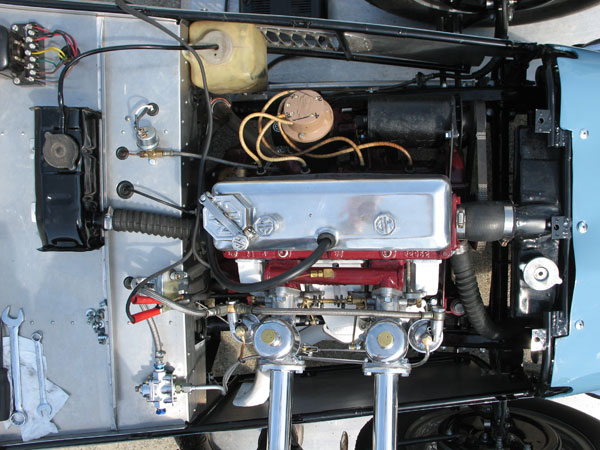
�
The MG TC version of the XPAG 1250cc engine had a tiny 2.62" bore and a relatively long 3.53" stroke.
�
With stock static compression ratio of just 7.4:1, the engine was rated 54bhp at 5200rpm.
�
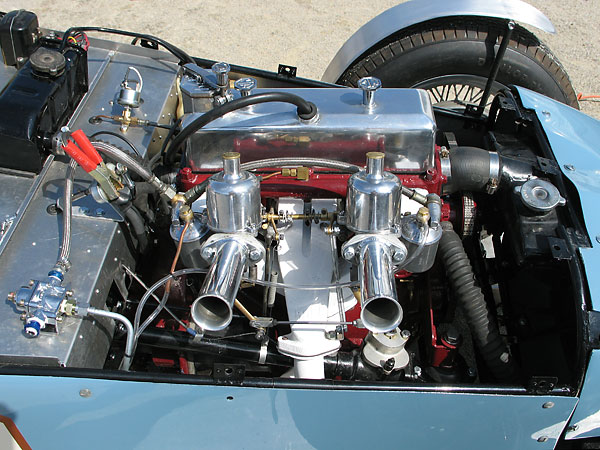
�
Thankfully, the cylinder head's exhaust ports aren't "siamesed" like later MG engines, but the valves
�
and ports are quite small. Note: the steering gear can be seen underneath the forward carburetor.
�
The aluminum cover on the steering gear is part of the Tompkins steering kit. See above for explanation.
�
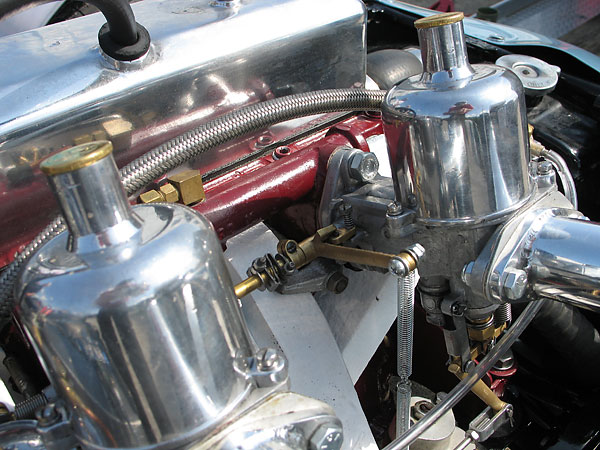
�
Dual 1.5" S.U. carburetors serve the four cylinder engine through a stock intake manifold.
�
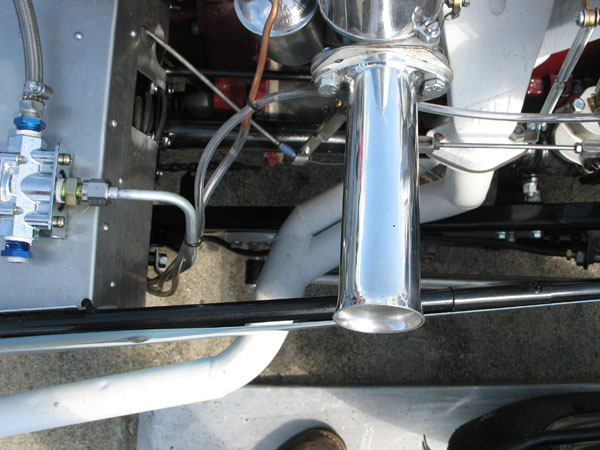
�
Shorter velocity stacks with more widely flared mouths might flow a lot better, but these are period correct
�
and original to Bowen's build. Fifty years old, and good as new: Solt two-piece iron exhaust manifolds flow
�
into a fabricated secondary collector. (Other companies have made and marketed similiar manifolds.)
�
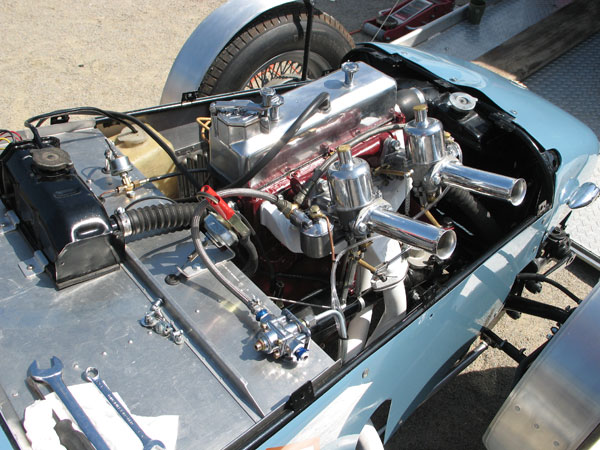
�
Foreground: Holley adjustable fuel pressure regulator.
�
(A battery charger's alligator clip is temporarily connected to the starter switch.)
�
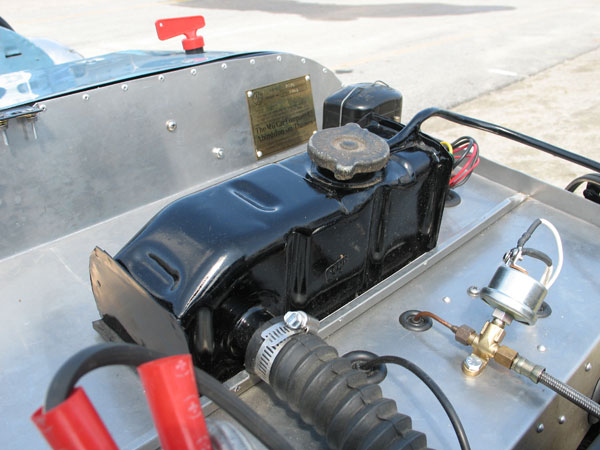
�
Pressurized cooling systems are much more efficient than non-pressurized systems, which largely explains
�
how this MG TC manages to race with a smaller-than-stock radiator. MG didn't use pressurized cooling
�
systems until the TF model. This coolant header tank was constructed from an old MG TD radiator. It's
�
high on the firewall to assure evacuation of air from the cylinder head. (At right: oil pressure sensor.)
�
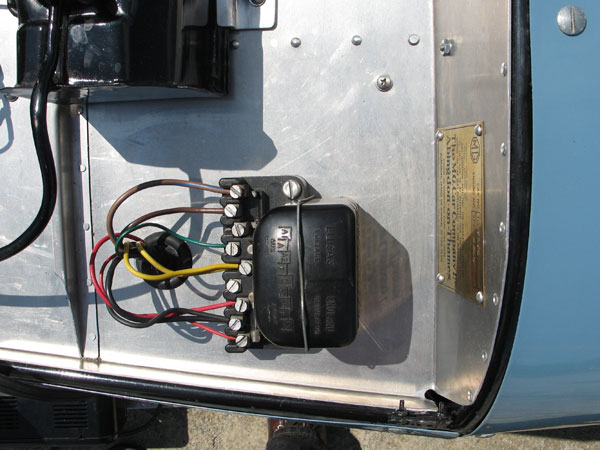
�
Lucas - England - Voltage Regulator
�
The nine terminals are labeled, left to right: "A1, A aux, A2, F, D, A4, A4, E aux ign, A3"
�
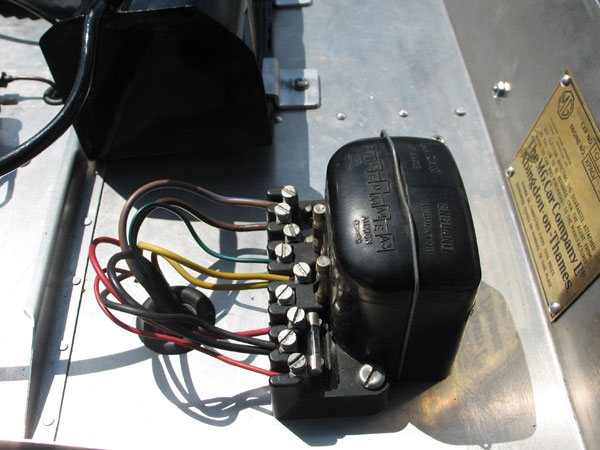
�
There are two fuse positions, but one of them isn't being used.
�
Two spare fuses are attached to the voltage regulator's removeable cover.
�
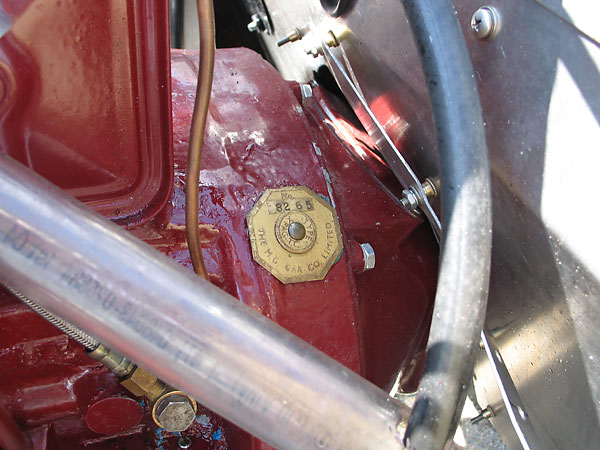
�
The M.G. Car Company Ltd., Type XPAG-TC, No. 8265
�
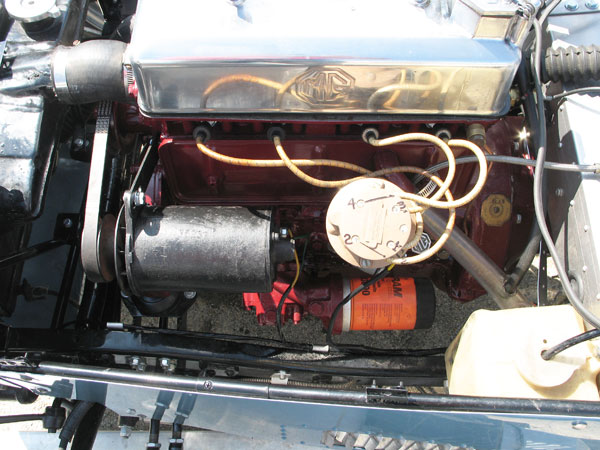
�
The XPAG engine was first introduced in 1939 for the Morris "10" model. Why was it called a 10?
�
The British government's arbitrary formula for calculating taxable horsepower only considered
�
piston area, not displacement. Morris responded by designing their engines to the formula. Result:
�
engine blocks were tall, and both blocks and crankshafts were rather heavy for their displacement.
�
MG did a remarkable job of making the best of what they were given by their parent company.
�
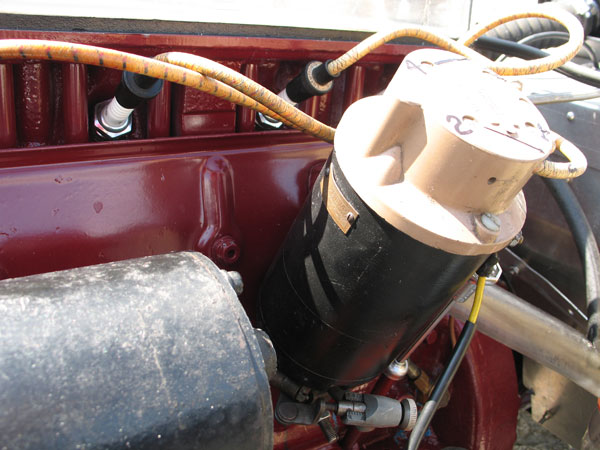
�
The Vertex Magneto features a vernier adjustment knob for adjusting ignition timing.
�
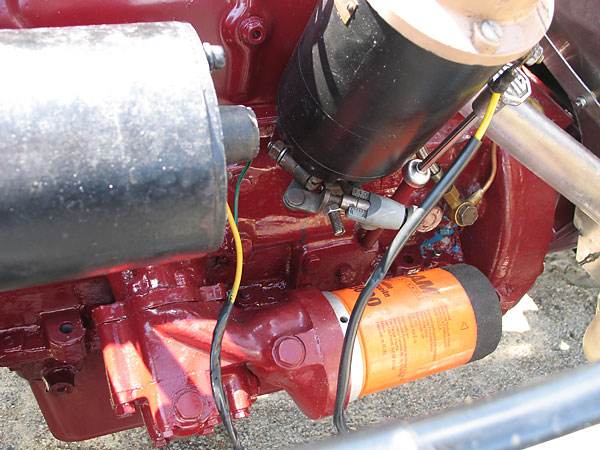
�
A spin-on oil filter adapter facilitates use of a Fram oil filter.
�
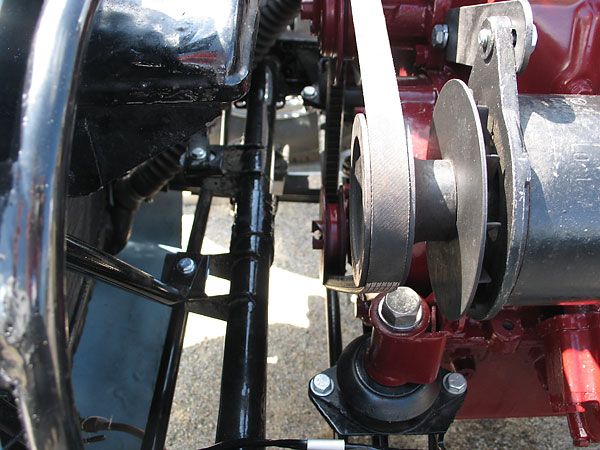
�
Engine pulleys and motor mount.
�
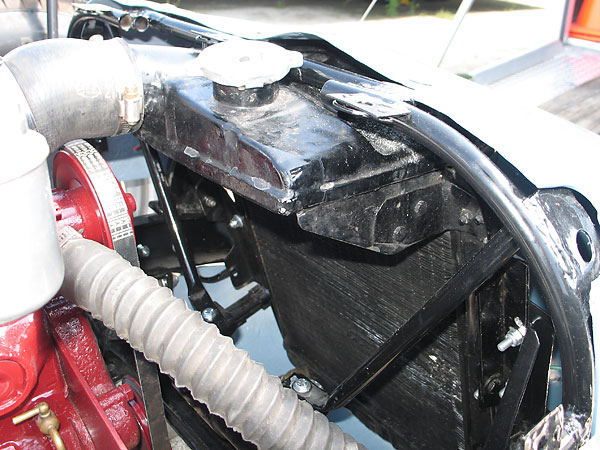
�
Radiator top tank.
�
�
Suspension
��
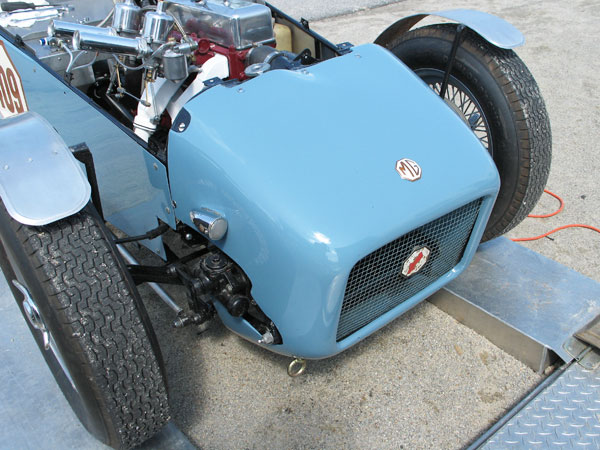
�
Charles Bowen created this distinctive fiberglass nose cone.
�
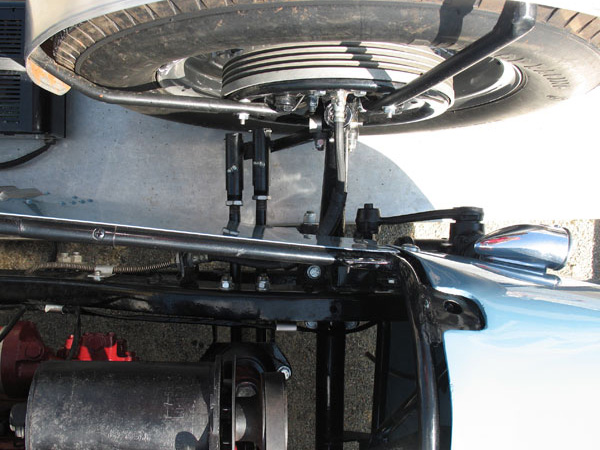
�
Notice that two links attach to the steering arm. One is a drag link across to the right-hand side.
�
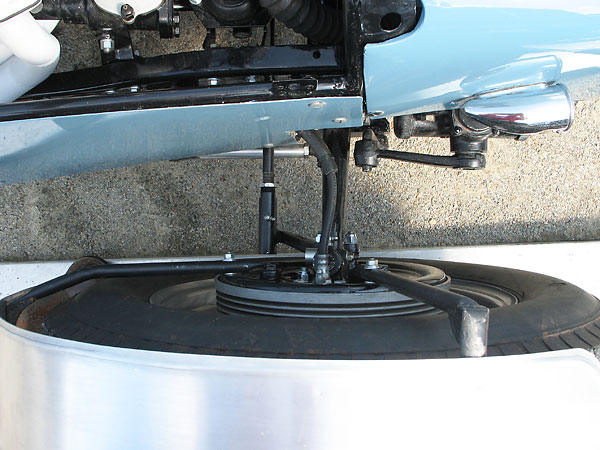
�
Alfin (aluminum finned) brake drums.
�
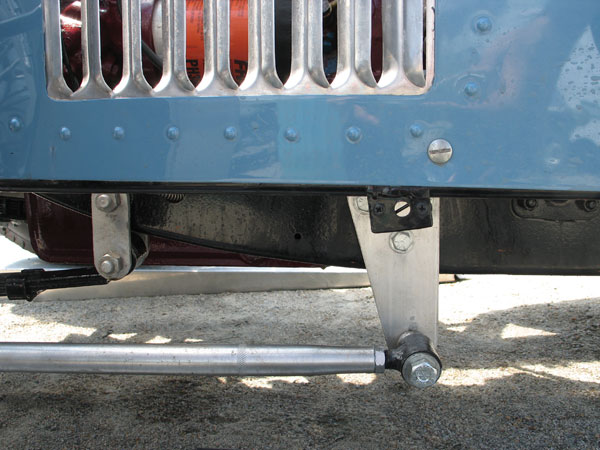
�
Trailing links from the front axle improve steering precision.
�
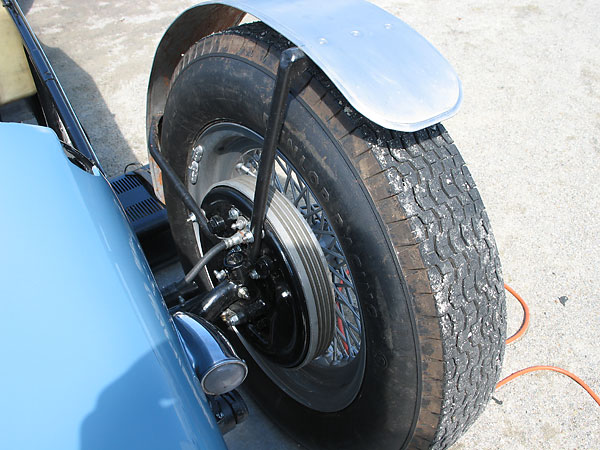
�
The front "motorcycle" fenders have been remade to Bowen's original design. Rear fenders are original.
�
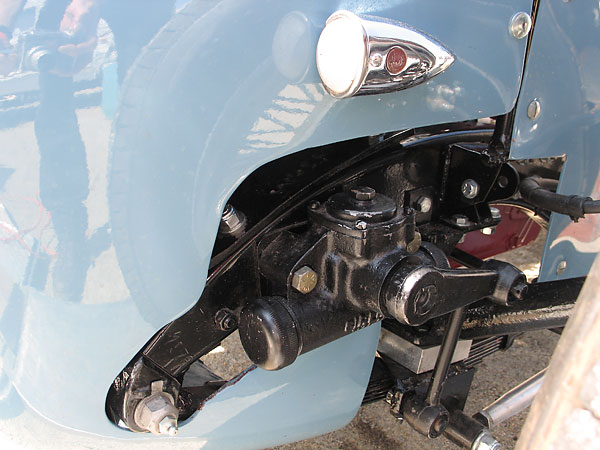
�
MG TC style Girling lever arm shock absorbers.
�
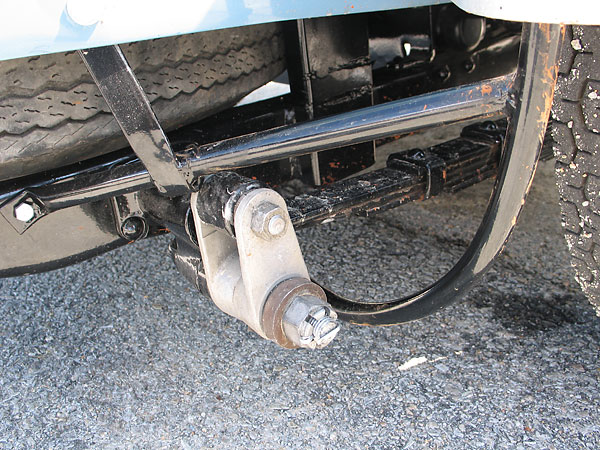
�
Rear leaf springs are on inverted shackles, and are underslung in relation to the axle.
�
�
Interior
��
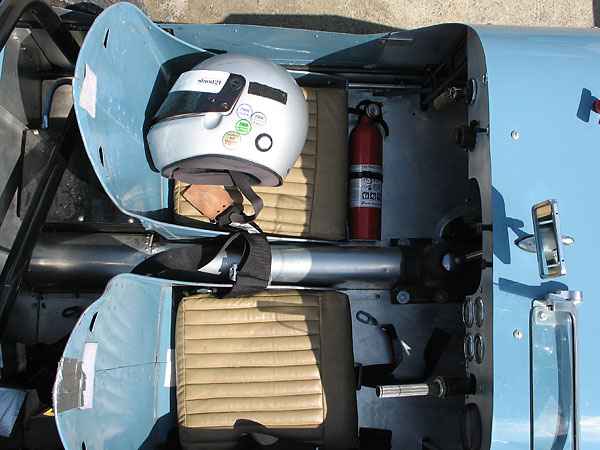
�
Aluminum seats from a Bell Model 47 helicopter have been cut down the middle and narrowed to suit.
�
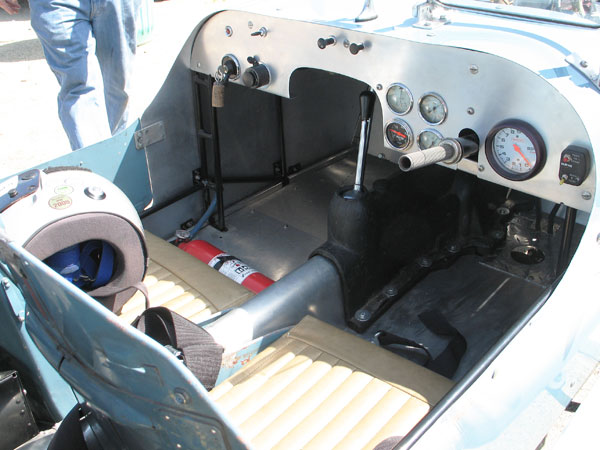
�
This flat aluminum dashboard resembles the one Charles Bowen installed, but it has subsequently been
�
replaced with one that affords a better view of the gauges. The thick black rubber transmission tunnel
�
is a standard MG TC part.
�
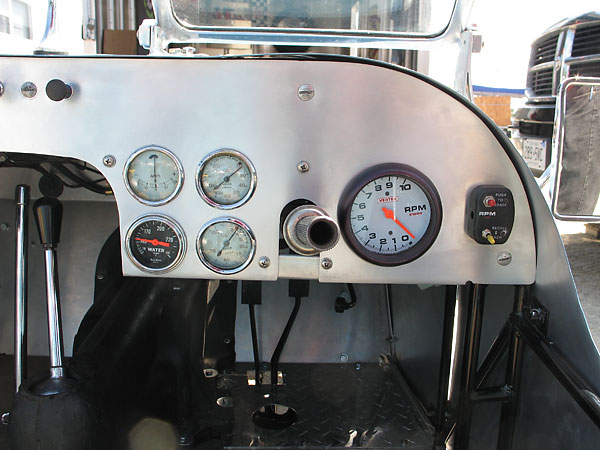
�
Clockwise from upper left: ammeter (+/-20 amps), Jaeger oil pressure gauge (0-160psi), Vertex
�
electronic tachometer (0-10000 rpm), Jaeger oil temperature gauge (30-100C), AutoMeter coolant
�
temperature gauge (90-240F). Note: most electronic tachometers are incompatable with the engine's
�
magneto ignition system because it doesn't have a coil. The Vertex tachometer solves that problem.
�
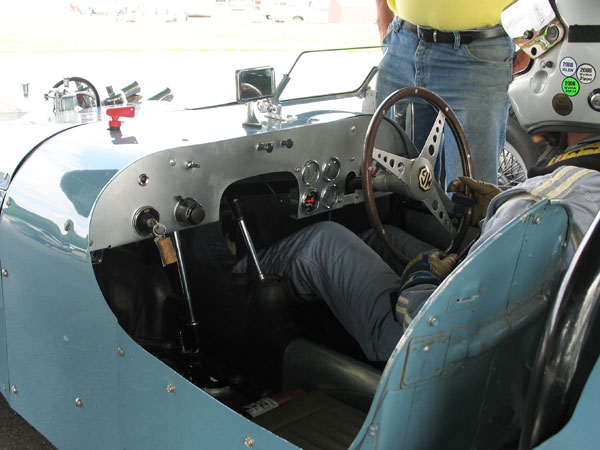
�
Very lightweight aluminum body panels.
�
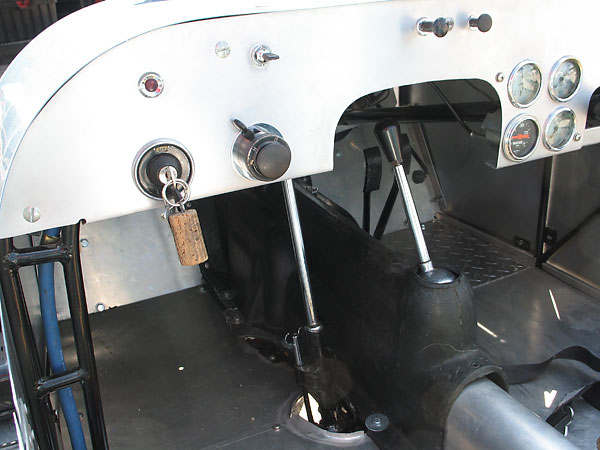
�
Shifter for the MG TC four speed transmission.
�
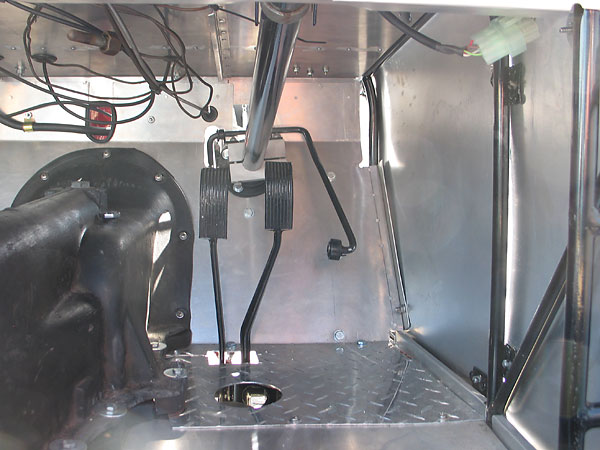
�
Skinny pedals lead to under-floor mounted master cylinders.
�
�
Exterior
��
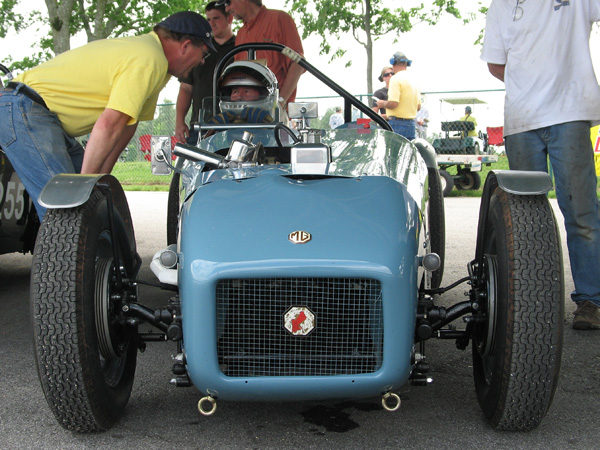
�
Dan was still working out the bugs of his new racecar when we saw him at V.I.R.,
�
He was lapping at about 2:56, for an average speed around the circuit of about 67mph.
�
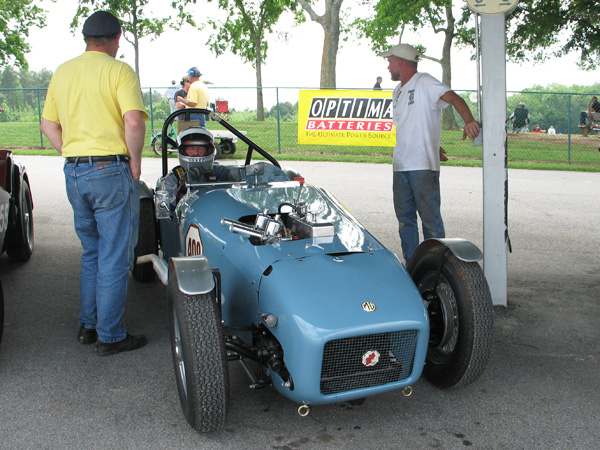
�
The Bowen TC-Special predates the Lotus Mk6, which would have somewhat similarly styled bodywork.
�
The point is lightness, of course, with low frontal area as a bonus. It's a zippy little car!
�
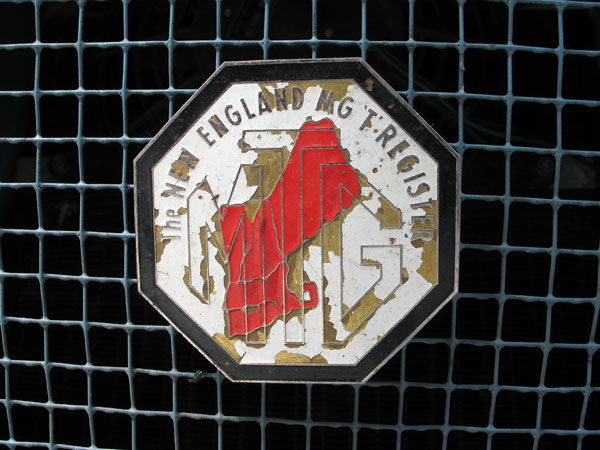
�
MTG: The NEW ENGLAND MG 'T' REGISTER
�
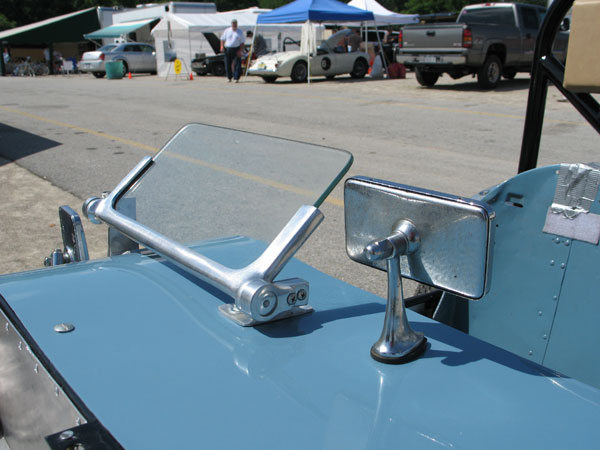
�
Brooklands style windscreen.
�
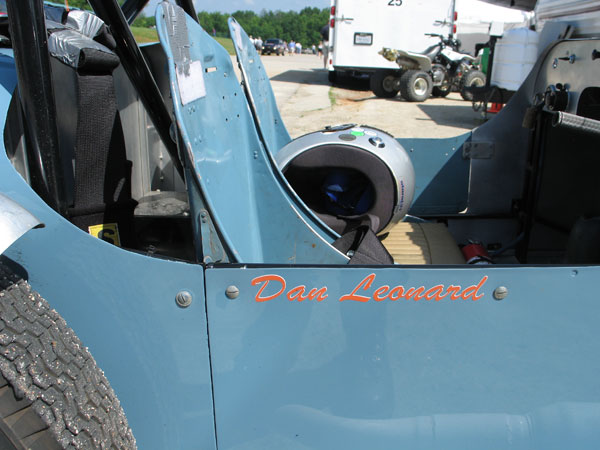
�
Driver: Dan Leonard
�
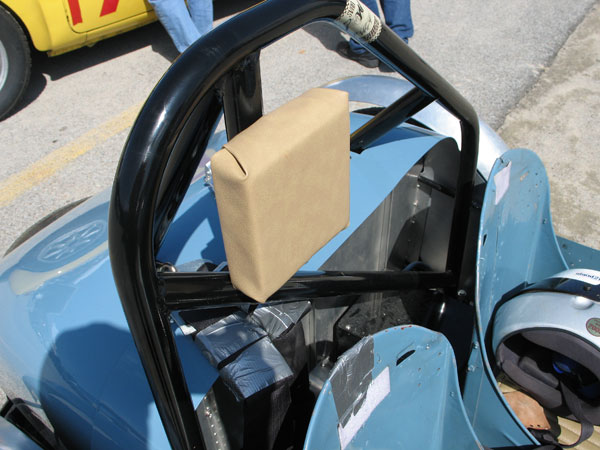
�
Headrest.
�
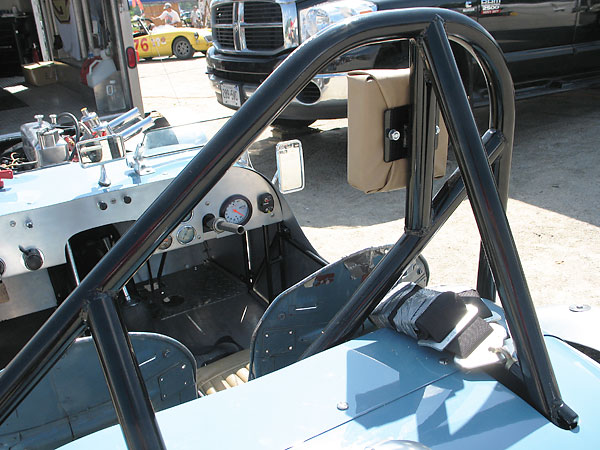
�
Neatly constructed rollover hoop by Jack Merryman of Merryman Modifications.
�
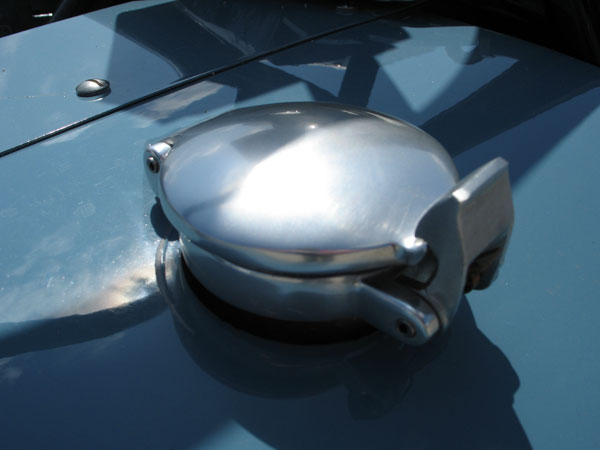
�
The LeMans style fuel filler cap is functional. It unscrews to facilitate removal of the rear body panel.
�
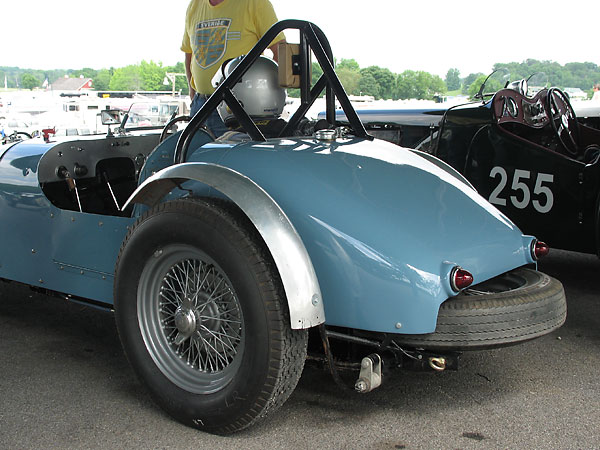
�
The elegantly contoured rear bodywork is fiberglass. Spare tire, passenger seat, and nominal "door"
�
(passenger side only) were no doubt included to meet the letter of period rules for sports car racing.
�
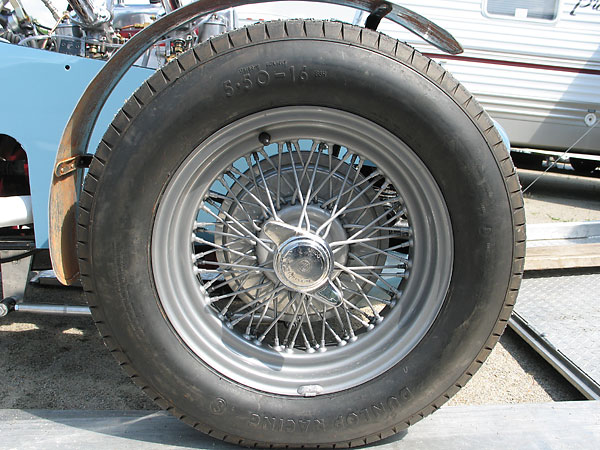
�
Dunlop Racing 5.50x16 tires on Dunlop sixty spoke sixteen inch wire wheels.
�
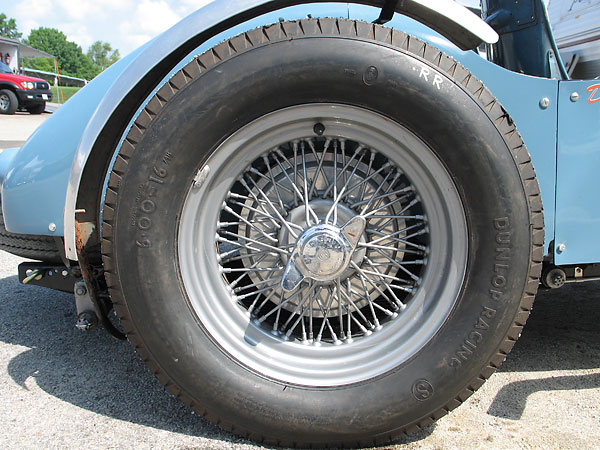
�
Dunlop Racing 6.00x16 tires on Dunlop sixty spoke sixteen inch wire wheels.
�
�
Note: the black-and-white photo (above) of the Charles Bowen family has been re-produced from �
"Bell Aircraft News", August 10 1956. Jack Merryman provided the three photos in the "Restoration" �
section (above) that show the MG TC partially dissembled. (They're used here by exclusive permission.) �
All other photos shown here are from June 2009, when we viewed the car at The Heacock Classic Gold Cup at �
Virginia International Raceway, except for the very first photo of the top of the article which is�
from the 2010 Glenore Winery Vintage Grand Prix of Watkins Glen. Photos by Curtis Jacobson for�
BritishRaceCar.com, copyright 2010. All rights reserved.
�
| If you liked this article, you'll probably also enjoy these: | �|||||
 | �
Carlton Shriver '38 Morgan 4-4 | �
 | �
Duncan Black '49 Lester MG | �
 | �
Joe Gunderson MG EX186 (~1958) | �
| You're invited to discuss anything you've seen here on The British Racecar Motorsports Forum! | �|||||
�
Notice: all the articles and almost all the photos on BritishRacecar.com are by Curtis Jacobson.
�
(Photos that aren't by Curtis are explicitly credited.) Reproduction without prior written permission is prohibited.
�
Contact us to purchase images or reproduction permission. Higher resolution images are optionally available.
�

 �
�
